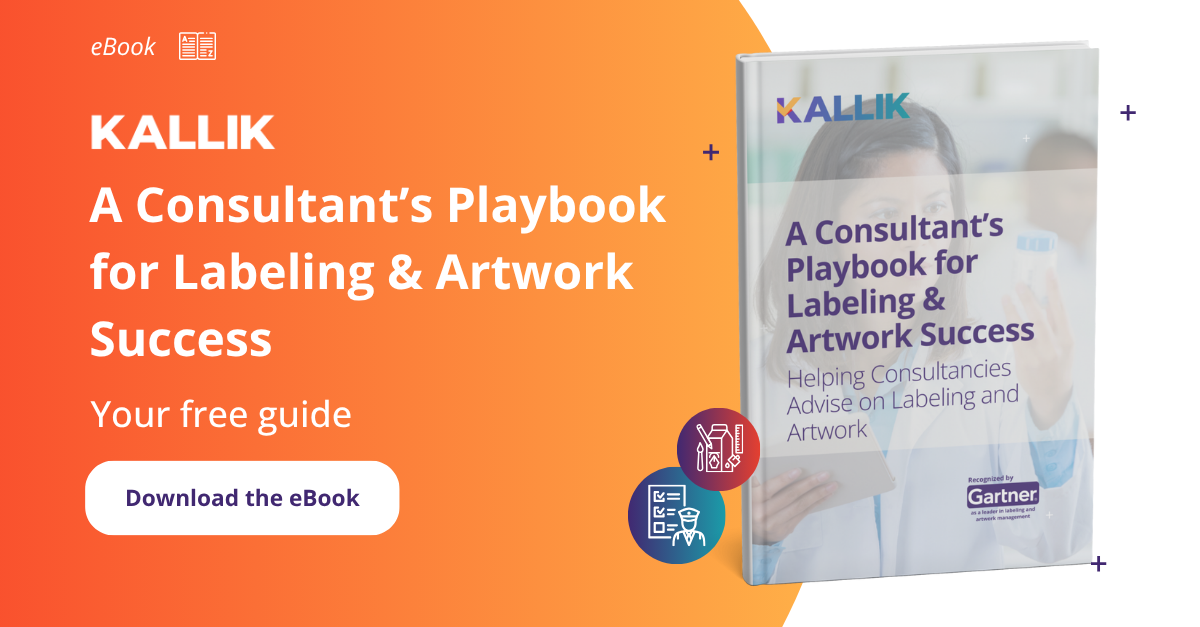Digital transformation is no longer a competitive advantage; it's an expectation. Consultancies are tasked with helping their clients modernize systems, integrate platforms, optimize operations, and deliver faster, more secure, more compliant outcomes.
However, amongst the noise of ERP upgrades, data migrations, and AI implementations, one business-critical function is still being forgotten... labeling and artwork management. Yes, labeling! It rarely gets taken seriously but labeling plays a huge role in compliance, branding, packaging, supply chain, marketing, regulatory, and IT.
Labeling: The Last Untapped Bottleneck in Enterprise Operations
In global organizations, especially those operating in highly regulated industries like pharmaceuticals, medical devices, chemicals, or food and beverage, labeling is far more than a backend admin task. It’s a make-or-break function that influences everything from time-to-market and regulatory compliance to brand perception and operational efficiency.
Despite this, many businesses still rely on outdated systems and fragmented processes to manage their labeling. Information is scattered across spreadsheets and siloed tools. Approval processes drag on for weeks. Version control is inconsistent. And compliance? Often reactive rather than proactive. This is where consultancies can step in and help.
Why Labeling Is a Strategic Opportunity for Consultancies
If you’re already advising clients on supply chain optimization, digital transformation, or regulatory matters, labeling should be on your radar. It directly impacts how fast products can launch, how efficiently global teams can collaborate, and how safely companies can operate in highly regulated markets.
By incorporating labeling into your strategic recommendations, you can help clients reduce compliance risk, avoid brand inconsistencies, minimize rework, and shorten approval cycles — all of which translate into measurable savings and competitive advantage.
As the provider of the leading labeling and artwork management platform, recommended by Gartner themselves, we are here to help with a free guide full of expert advice, giving consultancies the tools and knowledge to support clients with this integral part of business transformation.
What You’ll Learn in the Guide
Kallik has developed 'A Consultant’s Playbook for Labeling & Artwork Success', a step-by-step guide to assessing and advising on enterprise labeling. In this free guide, you’ll find guidance on how to identify the hidden inefficiencies and risks in your client’s current setup, how to conduct stakeholder interviews that reveal operational gaps, and how to evaluate whether their technology stack is fit for purpose.
This guide is designed for consultancies working with large, complex organizations where labeling has become a bottleneck or blind spot. It’s especially relevant if you’re advising:
- Newly appointed senior leaders unsure where to begin with operational change
- Multinational enterprises dealing with inconsistent labeling across geographies
- Highly regulated industries facing growing compliance pressure
- Clients preparing for broader digital transformation
Whether your focus is operations, branding, compliance, or innovation, this guide is here to help you provide strategic support from day one and position your consultancy as a leader in an often-overlooked area.

Labeling Is Crucial, Don't Get Left Behind
Digital transformation doesn’t happen in silos. If labeling and artwork management are excluded from the conversation, clients will continue to face delays, inefficiencies, and risks that undermine broader transformation efforts.
If you want to know more about what a future-proof, end-to-end, fully digital labeling process looks like, speak to one of our labeling and artwork management experts today. Call +44 (0) 1827 318100 or email enquiries@kallik.com. As a consultancy, you’re in a powerful position to lead the change, turning a neglected process into a strategic advantage. Empower your team to deliver smarter, faster, and safer outcomes for your clients.
